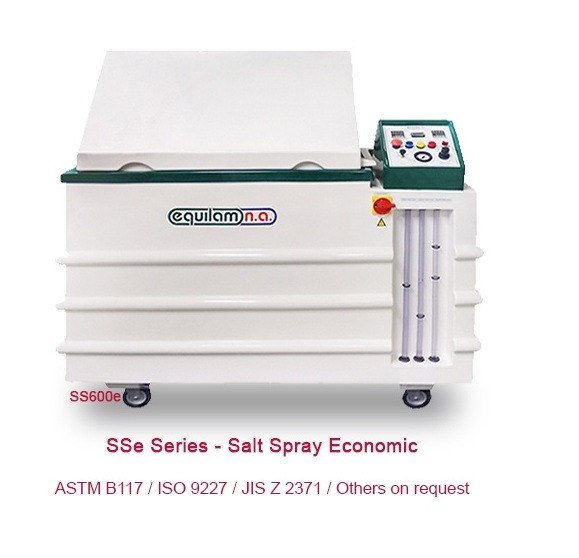ASTM B117
ASTM B117– Summary

Salt Spray (Salt Fog): Salt Spray (Salt Fog)
Purpose:
Defines the equipment, procedure, and operating conditions needed to create and maintain a salt spray (fog) environment for evaluating the corrosion resistance of metals and coated materials.
Scope:
- Establishes standardized conditions for conducting salt spray corrosion tests.
- Does not specify exposure duration or result interpretation (those depend on product specifications).
- Widely used for quality control, material comparison, and process evaluation.
Key Sections:
1. Apparatus:
- Consists of a fog chamber, salt-solution reservoir, air supply, atomizing nozzles, specimen supports, heating system, and control units.
- Materials of construction must be non-corrosive (plastic, glass, rubber).
- Chamber temperature: 35 ± 2 °C (95 ± 3 °F).
2. Salt Solution:
- 5 ± 1 % sodium chloride (NaCl) by mass in deionized/reagent-grade water.
- pH of collected solution: 6.5–7.2.
- Impurity limits: < 0.3 % total impurities, < 0.1 % other halides, < 0.3 ppm copper; no anti-caking agents.
3. Air Supply:
- Clean, oil-free compressed air humidified through an air-saturator tower at 46–49 °C.
- Ensures proper fog generation and consistency.
4. Test Specimens:
- Cleaned, coated, or bare metal samples.
- Orientation: 15°–30° from vertical; no contact or dripping between samples.
- Edges and contact areas protected with inert coatings.
5. Exposure Conditions:
- Fog collection rate: 1–2 mL/h per 80 cm².
- Continuous operation; interruptions limited to ≤ 1 hour/day.
- Exposure time defined by product specification (usually in 24 h increments).
6. Post-Test Evaluation:
- Specimens rinsed gently in water ≤ 38 °C, dried, and examined for corrosion, blistering, or coating failure.
- Report includes solution details, chamber temperature, fog rate, pH, specimen description, test duration, and observations.
Annexes (Informative):
- X1: Apparatus design, nozzle operation, temperature control, and construction materials.
- X2: Research use — test correlation with real-world exposure is limited; used mainly for comparative testing.
- X3: Evaluation of corrosive conditions via steel panel mass loss (for interlaboratory consistency checks).
Significance:
ASTM B117 is the most widely used corrosion test standard globally.
It provides repeatable, controlled laboratory conditions for comparing corrosion resistance but does not directly predict real-world performance.
Bình luận
Fanpage
